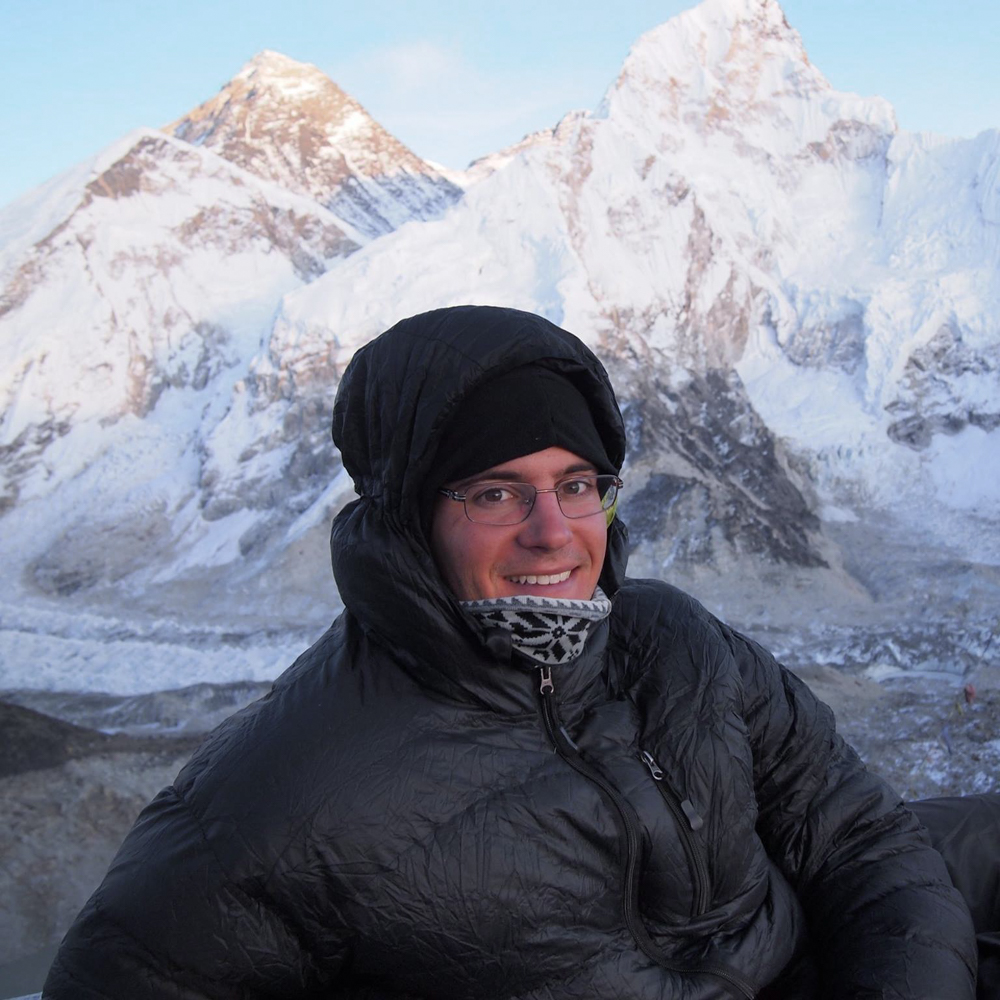
Rounce Joins CEE Faculty
David Rounce recently joined CEE as an assistant professor. For the past three years, he’s worked on an open-source global glacier evolution model to improve projections of glacier mass change and runoff. The opportunity to continue his research and help to develop the next generation of engineers motivates Rounce in his new chapter at CEE. “The department excels at seamlessly weaving together world-class science with societal applications,” he states.
Prior to his move to CMU, Rounce taught a Physics I recitation course, and found that he loved interacting with students in the classroom. “This ultimately led me to pursue a career in academia that included teaching.” He’s also served as a mentor to undergrad and master’s level students—and has taken them into the field to add hands-on learning to their projects and research.
His PhD dissertation, which influenced his open-source global glacier evolution model, focused on debris-covered glaciers and glacier outburst floods in the Nepal Himalaya near Mount Everest. Debris-covered glaciers are a specific type of glacier that have a layer of sediment, gravel, and rock on their surface. A thin layer of will cause a glacier to absorb more solar radiation thereby enhancing melt, while a thick layer may insulate the glacier and reduce melt.
Rounce believes that the model will better inform estimates of sea-level change and water resources. “My specialty is in quantifying how glaciers and glacier hazards are responding to climate change through the use of computational models, remote sensing, and fieldwork,” he says.
He holds a PhD in Civil Engineering from the University of Texas at Austin—where he also earned an MSE in Environmental and Water Resources Engineering. His undergraduate studies in Civil Engineering were completed at Villanova University.
“I didn't know what I wanted to do within the field of civil engineering until the start of my junior year when I was on a service trip in Puebla, Mexico. I was talking with local students who were designing a composting latrine for their senior design project and was inspired by how they were able to use their engineering skills to meaningfully impact their community,” he states. As an instructor, Rounce continues to integrate research and service projects into his courses, giving students the opportunity to focus on problems and become inspired by their education.
Rounce’s teaching style includes lectures and collaborative learning to address real-world problems. He believes that this type of learning experience helps students to fine-tune their interests and passions.
“[In the past, I’ve led] six field expeditions in Nepal to collect data and share our results with local community members. As these glaciers melt and retreat, they are prone to develop glacial lakes, which can become a flood hazard for downstream communities,” he adds.
He will continue to share his passion for providing practical engineering solutions with students—through his new position at CEE. “I've been incredibly impressed by the department's commitment to this interdisciplinary research regardless of whether it's within the department, across the university, or with local and international organizations and stakeholders.” He mentions that CEE’s interdisciplinary framework will help him to meet research goals and ensure that broader impacts are realized.
Rounce’s wife is a Pittsburgh native who has introduced him to the area’s biking trails, breweries, and fishing on the Allegheny River north of the city. Rounce is also a basketball and pickleball afficionado as well as an avid homebrewer.